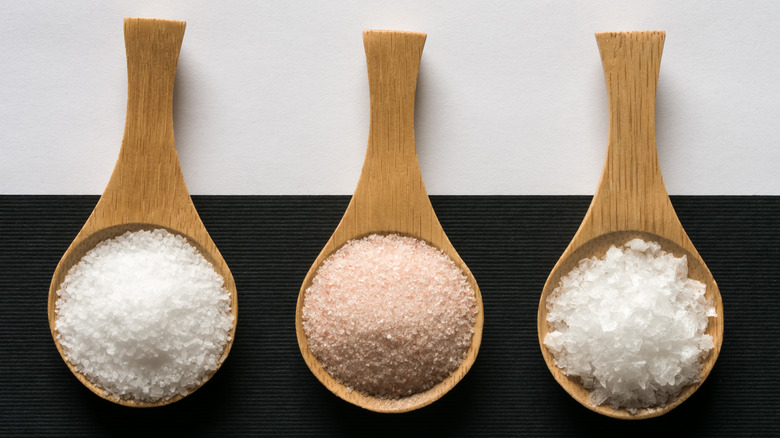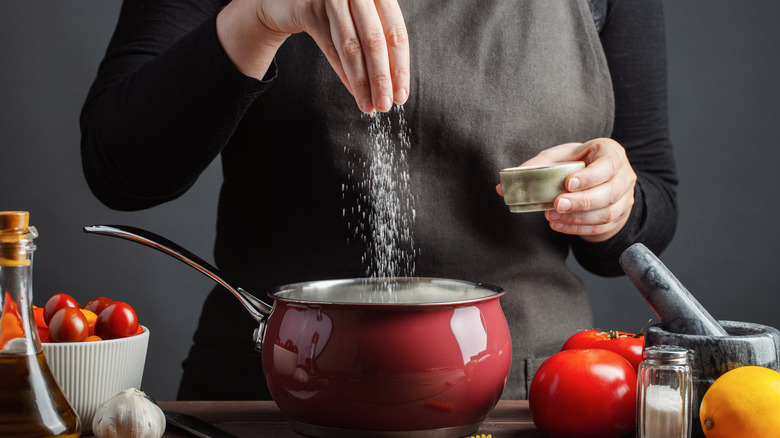Pink Himalayan Salt Vs. Sea Salt: Which One Is Better For You?
It's been well-documented that if your diet contains too much salt — also known as sodium chloride — this can put you at risk for high blood pressure and heart disease. But sodium is still needed to help maintain some of the body's important functions (via Harvard School of Public Health).
So, if you're a health conscious person and you want to add a little salt to your next meal, what kind of salt should you use? Is Pink Himalayan salt the best option? Is sea salt better for you? How are these different from table salt?
Table salt comes from the ground and undergoes a filtration process to remove inherent minerals, while sea salt comes from oceans and lakes. Sea salt undergoes minimal processing, so while it may sound like a healthy choice, licensed clinical psychologist and certified nutrition coach Candice Seti, warns that sea salt could be impacted by pollution and impurities in our waters (via The Healthy).
Pink Himalayan salt originates exactly where its name suggests — in the Himalayas. Some experts say this naturally pink salt is healthier than table salt because it is lower in sodium. Pink Himalayan salt also contains minerals such as zinc, iron, calcium, potassium, and magnesium, though only in small amounts (via WebMD).
Are there other kinds of salt that are better for you?
Interestingly enough, there are other types of salt you can consider besides table salt, sea salt, or Pink Himalayan salt.
Kosher salt is a large, flaky salt that is often used in cooking. It's called "kosher" salt not because the salt itself is specifically kosher, but because it was used by Jews in the traditional religious practice of removing blood from meat (via Forward). The large grains could then be removed so the meat did not become too salty. According to Healthline, kosher salt is a bit different from table salt due to its flaky structure and the fact that it may contain less additives, but they are otherwise quite similar. Additionally, there is Celtic salt, a sea salt that contains a small amount of minerals and has less sodium than table salt.
Whether you choose to use Pink Himalayan salt, sea salt, or any other kind of salt, the important thing is to be mindful of our sodium intake. When considering taste, texture, or grain size, chances are you'll find a salt that best suits your flavor needs.


